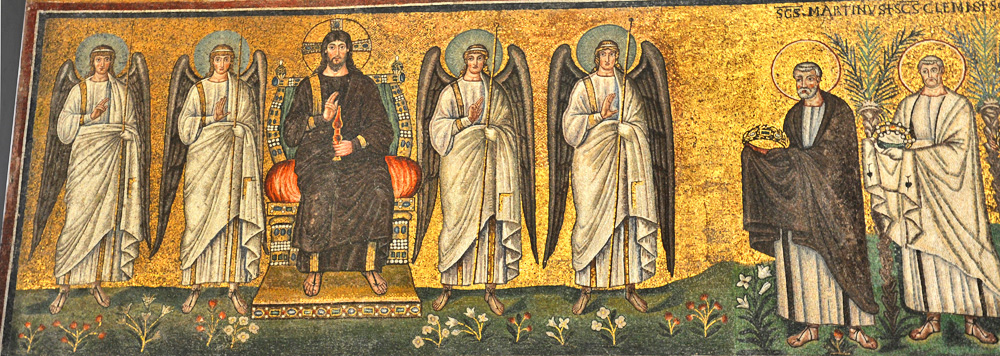The procession mosaic is clearly influenced by Revelation chapter 4, where God sits enthroned among "four living creatures" and receives the "golden crowns" of 24 ancients in white who sing "Thou art worthy, O Lord our God, to receive glory, and honour, and power." The "glory" in their song corresponds to the words Ego sum rex gloriae ("I am the King of Glory") in the book that was in Christ's left hand before the mosaic was restored in the nineteenth century.1 The four "creatures" have been rendered here not as the odd beasts in Revelation 4 but as four angels carrying the wands that in images of the Emperor signify his authority, as do Christ's purple robe and of course the throne itself.2
Originally an Arian palace chapel, the church was rededicated in 561 as an Orthodox basilica under the patronage of St. Martin of Tours, who was not a martyr but a celebrated opponent of Arianism.3 Thus the Orthodox revisions to the mosaics have placed him at the head of the procession and given him a purple cloak to distinguish him from the martyrs in white behind. The cloak could also be a reminder of the story of Martin's giving half his cloak to a poor beggar who was actually Christ himself. (See my page on St. Martin.)
The first of these martyrs is St. Clement, the fourth Bishop of Rome. At the time the Bishop of Rome was considered head of the church in Italy.4
In the mosaics along the left wall of the nave the panel directly facing this one shows the Virgin and Child enthroned correspondingly receiving the gifts of the Magi.
